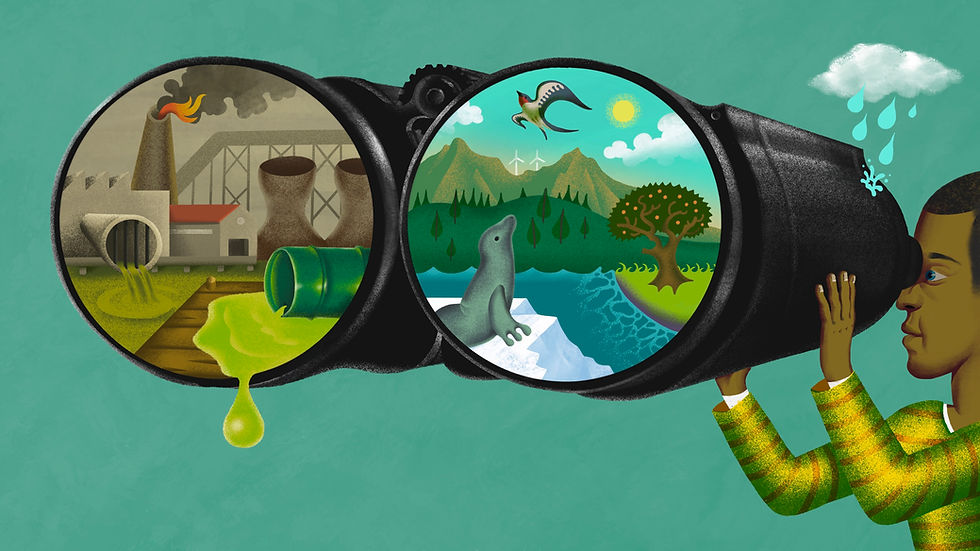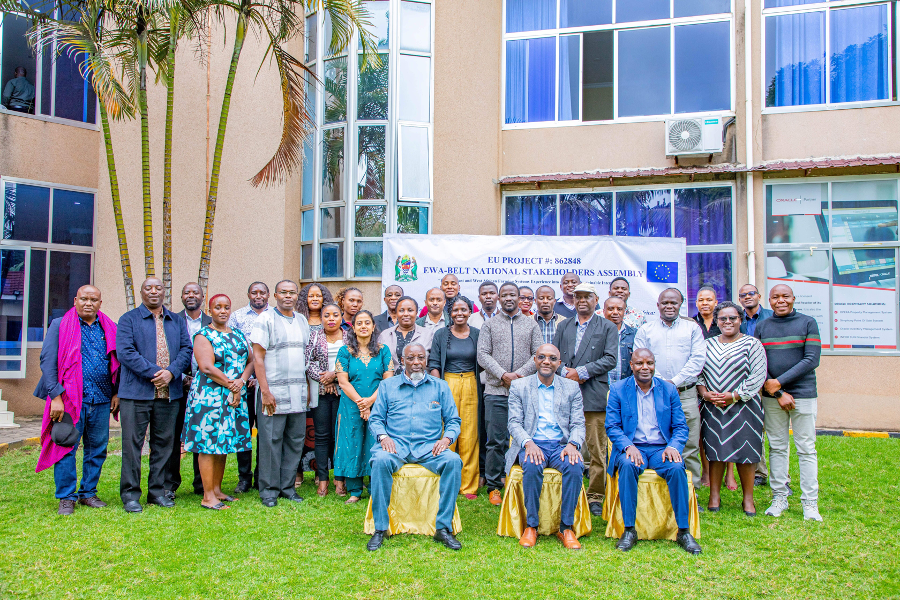Climate Change and Integrated Agriculture - Interview to Joseph Tholley
- OCCAM - Observatory on Digital Communication

- Mar 21, 2022
- 4 min read
Joseph Tholley, Dean, Faculty of Agriculture, and food security at University of Makeni, Sierra Leone- was one of the speakers of the 21st InfoPoverty World Conference during the Third Session.

How are climate changes affecting Sierra Leone’s population?
Most of Sierra Leone’s farmers and breeders are highly vulnerable. Climate change leads to a shortage of resources, limits the accessibility to financial support and it is interesting to note that time all of these farmers, engage in shifting cultivation, that discussion bond. Climate changes are causing shifting and deforestations since farmers leave the already extremely cultivated and stressed soil to find another. So, this implies that something has to be done. Or else at two points, the whole country become this advocated. And this is not good for the future of your next generation. Typically, in Sierra Leone you any farmer must carry a small amount of animal husbandry either in the form of chickens, or goods or sheep, and then crops. So, it is against this backdrop that time use actually green is called integrated agriculture is such integrating animals to crop production because this is the nature of the farmers in this country.
How is Ewa-Belt project helping get over agriculture and farm problems caused by the climate change?
So, the EWA-BELT to such is hinged on this team, trying to see how we can find a way to better organize the crops and the agricultural system in a manner so that the farmers can continue to produce and increase their productivity, avoiding the worst effect of climate change. This is the core value of the EWA-BELT. We are facing very heavy amount of deforestation and low yields, because of the parcels and lack of adequate water management which EWA-BELT aims to provide to us. Moreover, we discovered that time, shifting cultivation, is causing very heavy deforestation. Therefore, we have to revisit this method of this most infamous engaging in food production, and therefore we have to introduce this system. And this is what is really, which we're trying to encourage the farmers to do in an organized manner so that we can maintain the self-activity, increase the output, but maintain a very ambient, and ecofriendly environment, also improving the socio-economic status on the farmer and preserving this environment for future generations.
Can you tell me more about the “Integrated Agriculture?”
In other to maintain and sustain our land from the terrible deforestation due to shifting cultivation system and other human activities and their associated adverse effects on the soils and the ecology, the sedentary system of agriculture should be adopted by the small-scale farmers in Sierra Leone and beyond to maintain soil fertility, increase farm output, to improve the farmers socioeconomic status and create more eco-friendly environment for future generations.
The Integrated Agricultural Approach (IAA) is based on a mixed farming approach, where the small-scale farmers practice the art of crop and livestock production in the same piece of land in a more systematic and organized manner to support the co-existence of the different agricultural components to maximize outputs, maintain and sustain the same environment to become socioeconomically friendly for future generations yet unborn. Due to inadequate use of machinery by the small sale farmers, the integrated agricultural approach, which is bringing both the crops and animal livestock to a close range, has resulted to provide better management of the farm, which is reducing the intensive labor used in the shifting cultivation system. IAA ha is also seen to increase the yield component per hectare of the small sale farmers due to the better use of the farm inputs (recycling of the farm materials as organic fertilizers). It also assist farmers to appreciate the additional use of improved technologies and enhance their adoption. The Farmer Field Rescarch unit (FFRU) will be the core approach to capacitate farmers learning and adoption of the new technologies in this integrated agricultural approach (IAA), which being done in a better or more organized manner to maximize production and productivity from a small piece of land. This approach will surely minimize the shifting cultivation system; hence reducing deforestation in the country, maintain better biodiversity and improve on the adversities of climate change and its hazards.
Which is the proposed approach to achieve sustainable agricultural productivity?
Improving land transformation will make better use of the natural resources such as water and soil fertility to improve on the yield components (crops and livestock) per hectare per farmer. The systematic combination of diverse farm components (fish, crops, and livestock) in the same piece of land, in an organized manner dos not only lead to increase productivity to the farmer but also reduces the drudgery, improves the leisure time for fairly reunion and increase the scope of other productive engagements of the farmer for better socioeconomic improvements. The method will also lead the farmers to make full and effective use of the natural resources (soil fertility, perennial waters, land space etc.) in the farm to increase the yield component of all the farm sectors (i,e. animals, crops, fish). This will reduces the farmers' time wasted in Sierra Leone during the dry season, when there are no rains.
Since there will be new technologies introduced into the system, such as irrigation, landscaping, by-products reprocessing and utility, the farmers will also learn and use new technologies to increase their production scale per hectare. Post-harvest loses are also seen to be highly minimized because the farm structures to handle the farm produce are relatively permanent and are under continuous maintenance by the farmer, who needs them throughout the year. The approach will also lead to perennial agricultural production throughout the year, thus improving the nutritional and socio-economic status of the rural por farmers of the country.





Comments